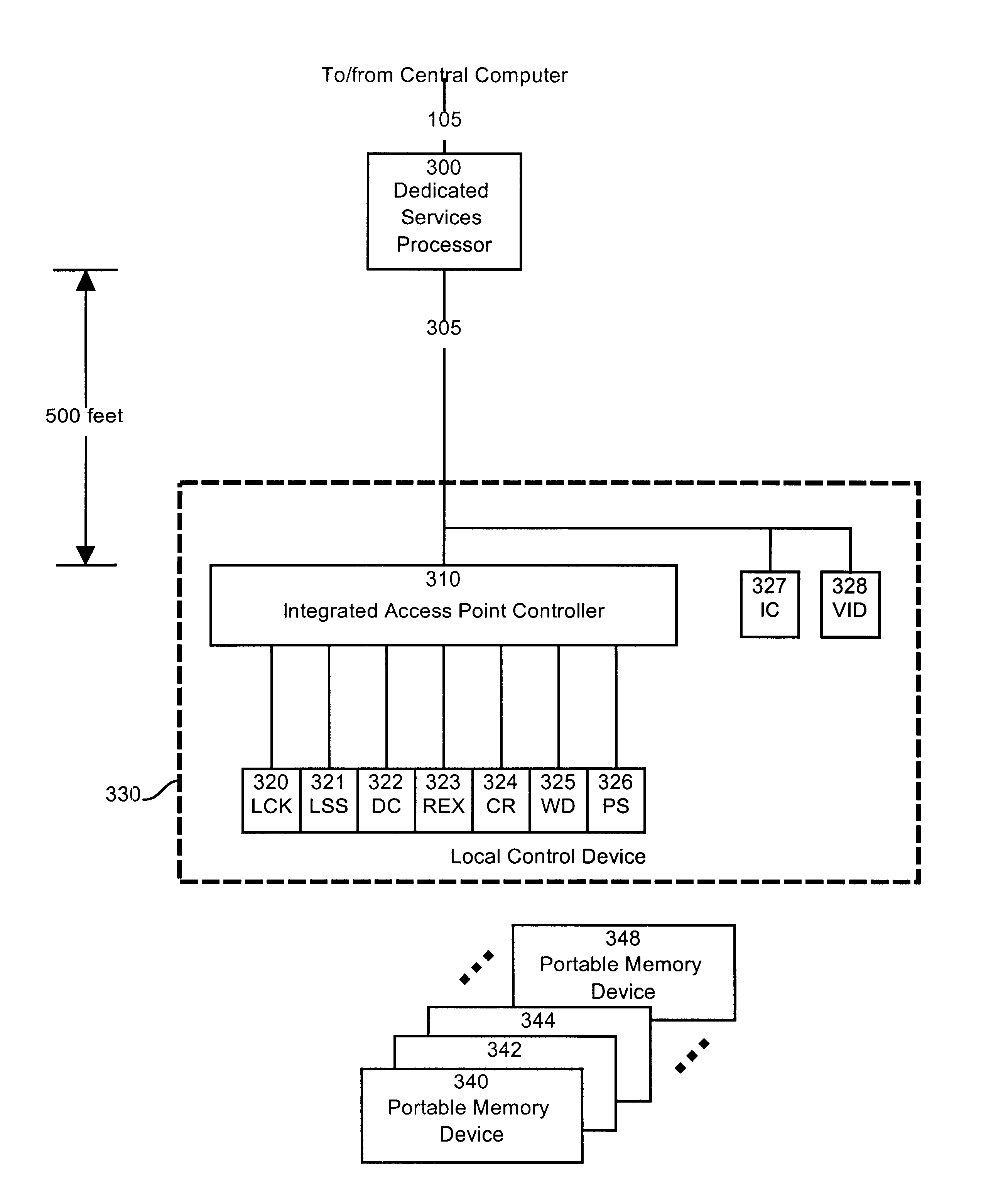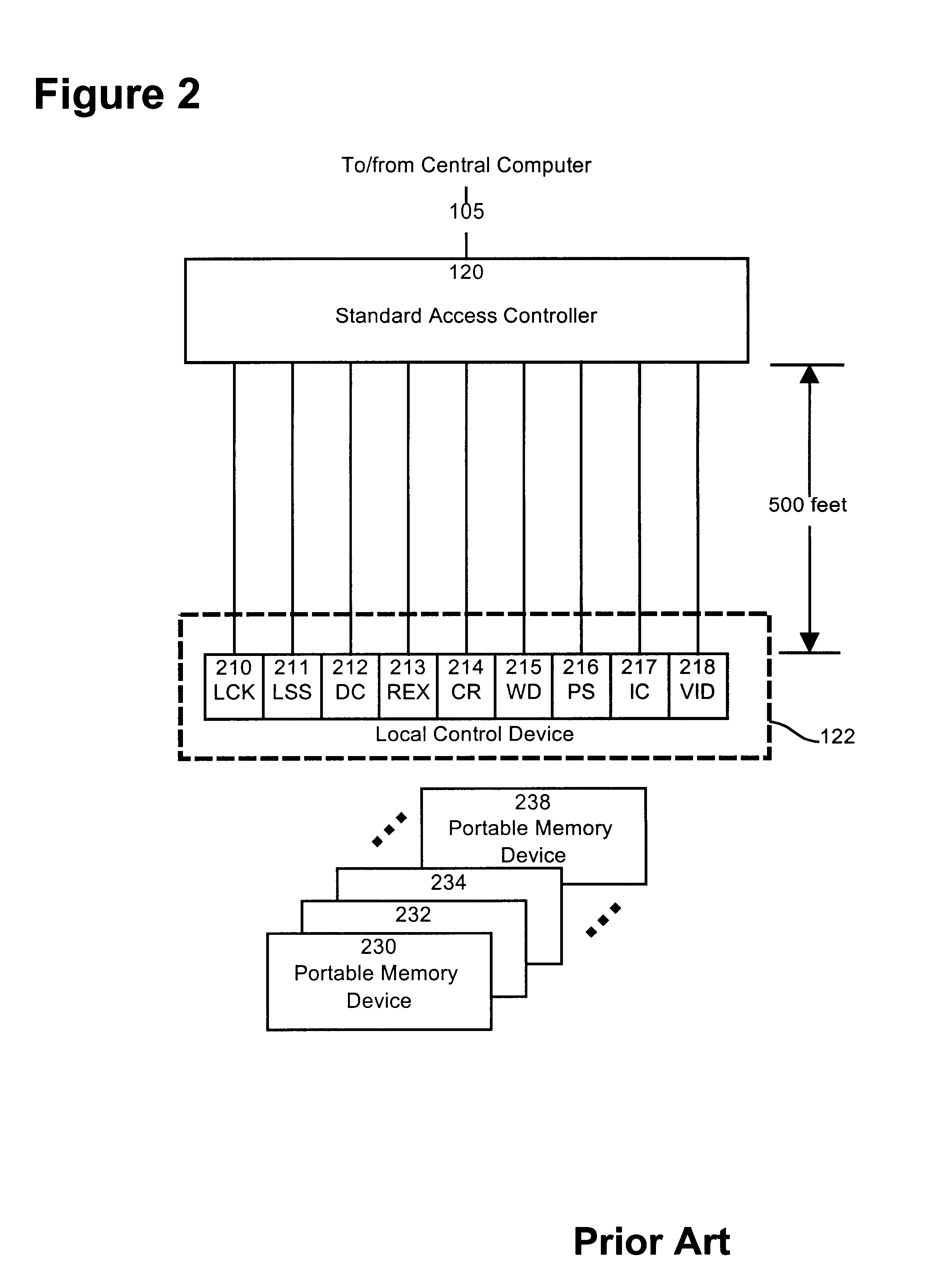Shared intelligence automated access control system
an access control system and intelligence technology, applied in the direction of unauthorized memory use protection, instruments, pulse techniques, etc., can solve the problems of sac memory, memory allocation does not even provide one unique schedule, memory capacity of sac, etc., and achieve the effect of less bandwidth and faster response tim
- Summary
- Abstract
- Description
- Claims
- Application Information
AI Technical Summary
Benefits of technology
Problems solved by technology
Method used
Image
Examples
first embodiment
FIG. 6a illustrates the data communication protocol. Three voltage level are possible: the high level 610 that represents a one, which is recessive, a low level 612 that represents a zero, which is dominant, and finally the power source level 600 provides power to all network nodes. Also note that the low level 612 is used at the beginning of each data communication to synchronize the nodes. The Sync 602 uses 20% of the duty cycle 614. In an embodiment of the invention, a duty cycle of 100 microseconds was used successfully. Recessive 610 and dominant 612 bits need to be defined in order to determine priority in case of message collision. A bitwise arbitration approach is used to determine which message has priority. That is, if a node reads a dominant bit while it is transmitting a recessive bit, it will stop transmitting immediately and release the bus. The result is that the higher priority message is not lost. Before transmitting, a node must therefore monitor the network to ver...
second embodiment
FIG. 6b illustrates the data communication protocol. In this embodiment, arbitration, bit values 630 and 632, power source 620, sync 602, idle time 628 and duty cycle 634 are all the same. The only difference resides in the data transmission. In this case, a value represented by 8 bits of data is transferred during 0% to 90% of the duty cycle 634 and this value is either being written on the bus or an indication of a value read from the bus.
In this example of the data communication protocol, the node clock rate is quite important. Eight bits of data can represent 256 different values. Good results for reading the bus falling or rising edge can be obtained by sampling twice for each of the 256 values. This means that during the 90 microseconds that the 8-bit data is represented (90% of 100 microseconds), the bus is read 512 times or at a rate of approximately 5.7 megahertz. Therefore, if, for example, a node brings the voltage on the bus to zero 632, all nodes will synchronize their ...
PUM
 Login to View More
Login to View More Abstract
Description
Claims
Application Information
 Login to View More
Login to View More - R&D
- Intellectual Property
- Life Sciences
- Materials
- Tech Scout
- Unparalleled Data Quality
- Higher Quality Content
- 60% Fewer Hallucinations
Browse by: Latest US Patents, China's latest patents, Technical Efficacy Thesaurus, Application Domain, Technology Topic, Popular Technical Reports.
© 2025 PatSnap. All rights reserved.Legal|Privacy policy|Modern Slavery Act Transparency Statement|Sitemap|About US| Contact US: help@patsnap.com



